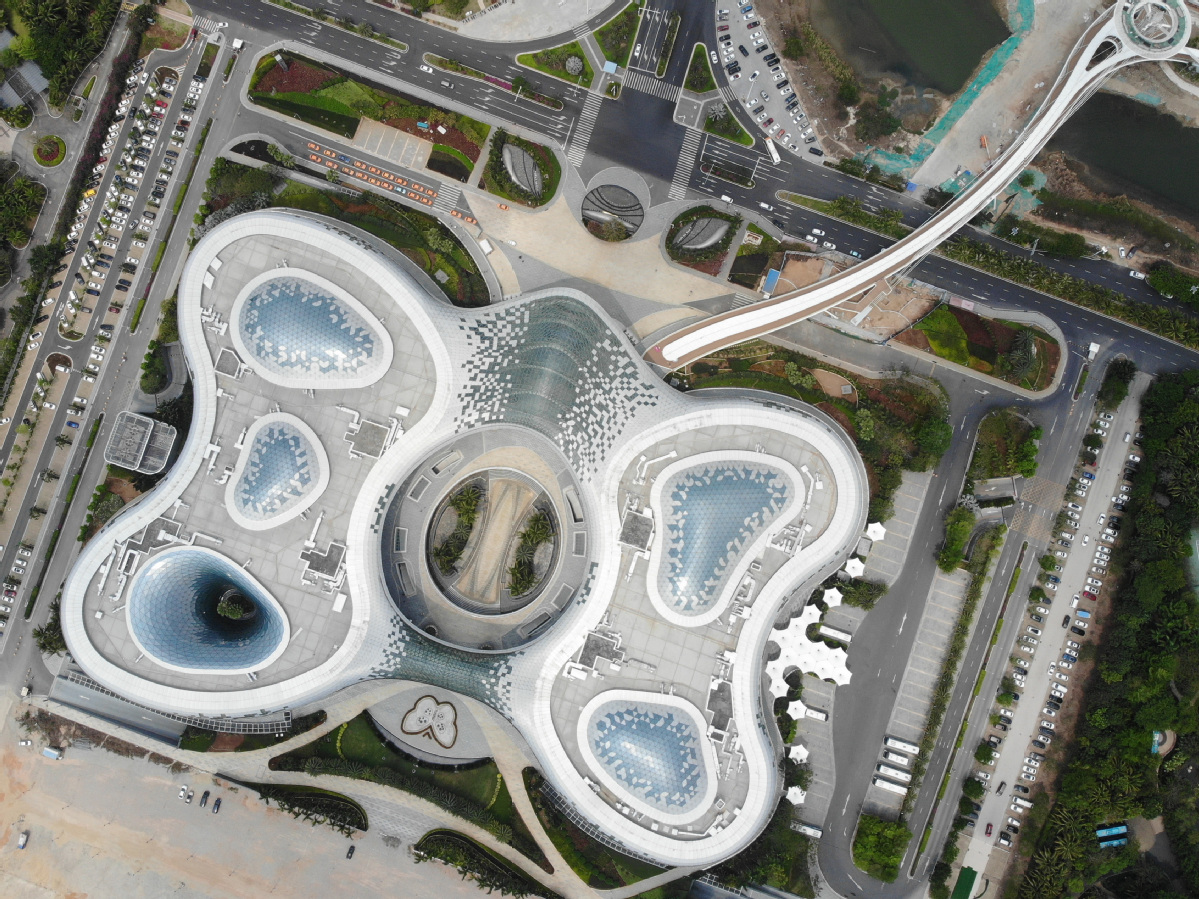
Aerial photo taken on April 4, 2020 shows the Sanya international duty-free shopping complex in Sanya, South China's Hainan province. [Photo/Xinhua]
Preferential policies, including tailored taxation mechanisms, a special market access list and negative list offered to the Hainan free trade port will facilitate free trade, investment and cross-border capital flows in the island province, officials and experts said on Tuesday.
They spoke after President Xi Jinping underlined the importance of high quality and high standards in building a free trade port in Hainan province while prioritizing integrated institutional reform in the process.
Xi, who is also general secretary of the Communist Party of China Central Committee and chairman of the Central Military Commission, said in an instruction published on Monday that building the free trade port is a major strategic decision adopted by the CPC Central Committee.
The market access list is specially designed to boost the growth of the Hainan free trade port-the first of its kind across the country.
Given that, experts said, Hainan is expected to attract global companies from logistics, civil aviation, medical tourism, shipping, financial and service sectors to invest and expand their presence in its market.
Unlike the negative list being used in China's pilot free trade zones, the special market access list is an advanced platform of policy dividends, based on Hainan's location, industrial structure and the central government's support for the province's daring reforms and innovation, said Bai Ming, deputy director of the international market research institute under the China Academy of International Trade and Economic Cooperation.
The market rules of the Hainan free trade port are further clarified in the government's master plan.
The special market access list focuses on market admission for businesses from China and overseas, while the negative list lays out economic activities that foreign companies are not allowed to engage in at the port, said Wei Xiaoquan, a researcher specializing in regional economic development at the University of International Business and Economics in Beijing.
The port will formulate and issue negative lists for cross-border services to treat overseas service providers with national treatment. They would remove various existing barriers in the services trade such as cross-border delivery, overseas consumption and people's movement, and grant national treatment to overseas service providers, according to the plan.
He Lifeng, head of the National Development and Reform Commission, said due to Hainan's geography, it lacks sufficient development in the hinterland and is unsuitable for development of large-scale processing.
"To build a free trade port, Hainan needs to foster strengths and circumvent weaknesses, giving full play to its advantage of early and pilot implementation of reform and opening-up," He said in an article published in People's Daily on Tuesday.
He urged the province to focus on the development of tourism, modern service industries and the high-tech sector, introduce global high-end production factors and build an open and ecological service-oriented industrial system with international competitiveness.
The development of the free trade port will provide support to national strategic goals in terms of institutional innovation, growth impetus and greater opening-up, said Chi Fulin, president of the Haikou-based China Institute for Reform and Development. Chi said China's move will build the port into an important hub connecting the Pacific and Indian oceans.
Teresa Zhuge, executive vice-chairman for China of Global Logistic Properties Inc, said the government's master plan for the Hainan free trade port will lay a great foundation for sustained economic growth for the island.
She said GLP is excited about the opportunities ahead and has been working with partners to contribute to the development of the Hainan Free Trade Port.
"We will bring the next generation of technologies and service industries that will be favorable for Hainan's economy in the long run," she added.
China is aiming to establish a set of free trade port policies focusing on trade and investment facilitation across Hainan by 2025, building an economy with a new level of openness by 2035 and a high-level free trade port of global influence by the middle of the century.
Chinese authorities on Monday released a master plan for the Hainan free trade port, aiming to build it into a global...
Chinese authorities on Monday released a master plan for the Hainan free trade port, aiming to build the southern isl...
Chinese authorities on Monday released a master plan for the Hainan free trade port, which aims to build the southern...